
Fundamentals
The life of a single hair strand, much like the rhythmic pulse of the seasons or the ebb and flow of tides, follows a distinct, cyclical pattern. This biological cadence, universally observed across humanity, shapes the appearance and vitality of our hair. For textured hair, this cycle holds particular significance, intertwined with centuries of ancestral wisdom and care practices. The hair growth phases are a natural biological delineation, a sequence of states that each hair follicle undergoes, ensuring continuous renewal.
This fundamental process of growth, transition, and release is the very foundation upon which all hair care, both ancient and contemporary, rests. Understanding this inherent rhythm allows for a deeper appreciation of the living fiber that crowns us, a fiber that has always carried cultural weight and historical memory.
At its core, the Hair Growth Phases refer to the distinct periods in the life cycle of each hair follicle ❉ Anagen, Catagen, and Telogen, with a subsequent active shedding phase, Exogen. Each follicle on the scalp functions independently, meaning that at any given moment, various strands are in different stages of their individual journeys. This asynchronous progression prevents mass shedding, allowing for a constant, albeit varying, density of hair. The intrinsic meaning of these phases extends beyond mere biology; they represent the resilience of life, the continuous unfolding of self, and the enduring connection to lineage that hair so often embodies.
The hair growth phases are a biological testament to life’s continuous renewal, a cycle deeply connected to the heritage of textured hair care.
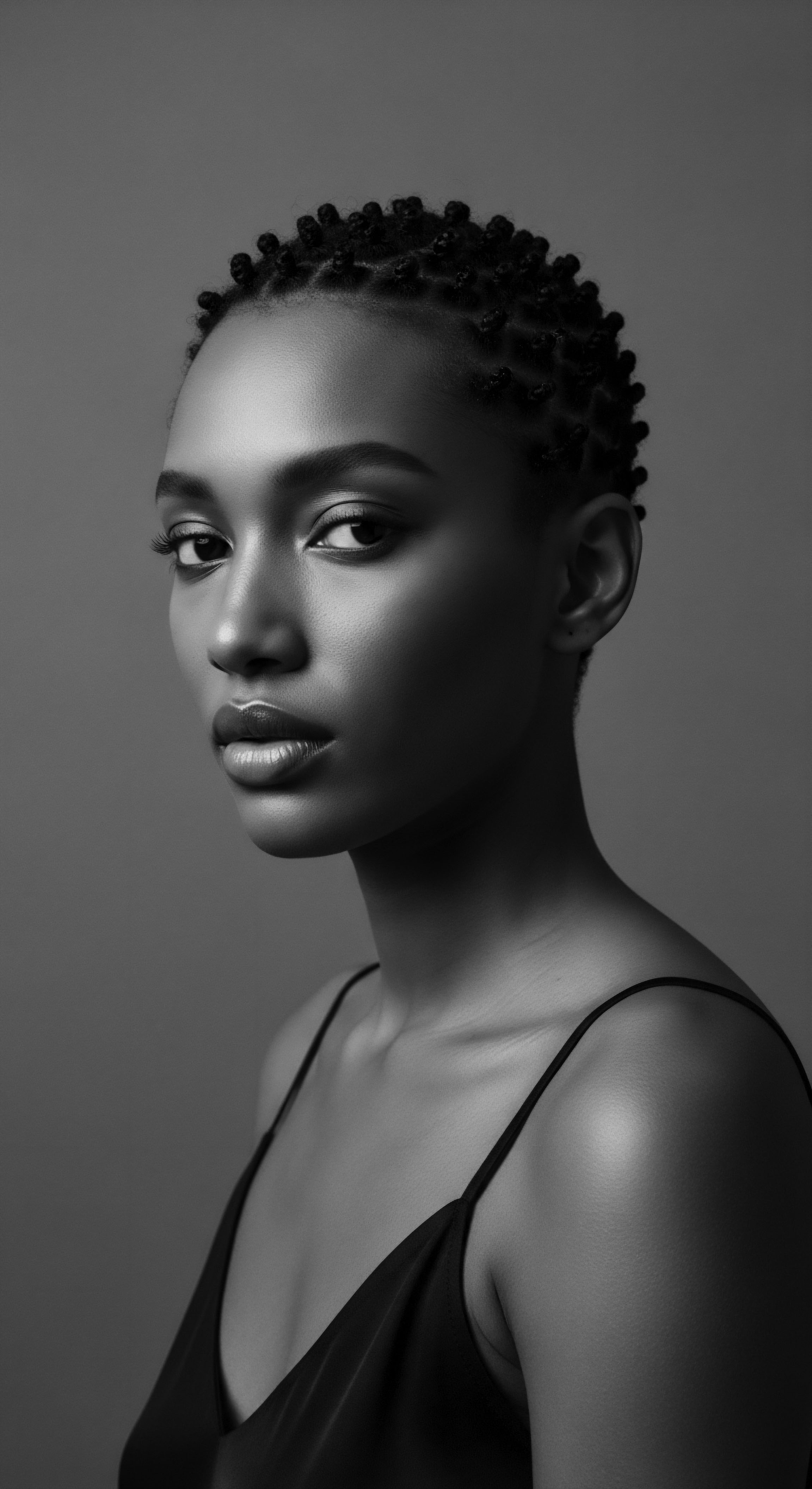
Anagen ❉ The Season of Flourishing
The Anagen Phase, often termed the “growth” or “active” phase, marks the period when hair cells in the root divide rapidly, generating new hair. This is the time of vigorous expansion, where the hair shaft pushes forth from the follicle, extending its length. For scalp hair, this vibrant period can stretch from two to seven years, or even longer, determining the ultimate length a strand can attain. The genetic blueprint inherited from our ancestors plays a considerable role in the duration of this phase.
Individuals with textured hair, particularly those of African and mixed heritage, often possess a shorter anagen phase compared to their counterparts with straighter hair textures. This genetic predisposition contributes to variations in maximum hair length across different populations.
Across ancestral traditions, there was an intuitive understanding of this growth period. Practices aimed at nurturing hair length, such as meticulous scalp care, gentle manipulation, and the application of nutrient-rich plant extracts, can be seen as efforts to support and potentially prolong this anagen stage. Consider the ancient wisdom of West African communities, where children’s hair was often kept in protective styles and treated with nourishing oils derived from local flora. These practices, passed through generations, sought to provide the optimal environment for the hair to flourish, a testament to observing the hair’s natural vitality and seeking to enhance its capabilities.

Catagen ❉ The Pause, A Moment of Transition
Following the vibrant anagen phase, hair enters the brief, transitional Catagen Phase. This period signals a pause in active growth, lasting approximately ten days. During this time, the hair follicle shrinks, detaching from the dermal papilla, its source of nourishment.
The hair strand, now known as a “club hair,” ceases its active growth but remains anchored within the follicle. This stage represents a natural withdrawal, a preparation for the next cycle.
In traditional hair care, this brief interval might have been instinctively respected through periods of minimal manipulation. After extensive styling or communal grooming sessions, a time of quietude for the hair, perhaps with loose, unbraided styles, could have mirrored this natural pause. The absence of forceful pulling or rigorous combing during this delicate transition would have preserved the integrity of the hair as it prepared for its resting period. The wisdom inherent in such approaches recognized the hair’s need for respite, acknowledging its journey beyond constant expansion.
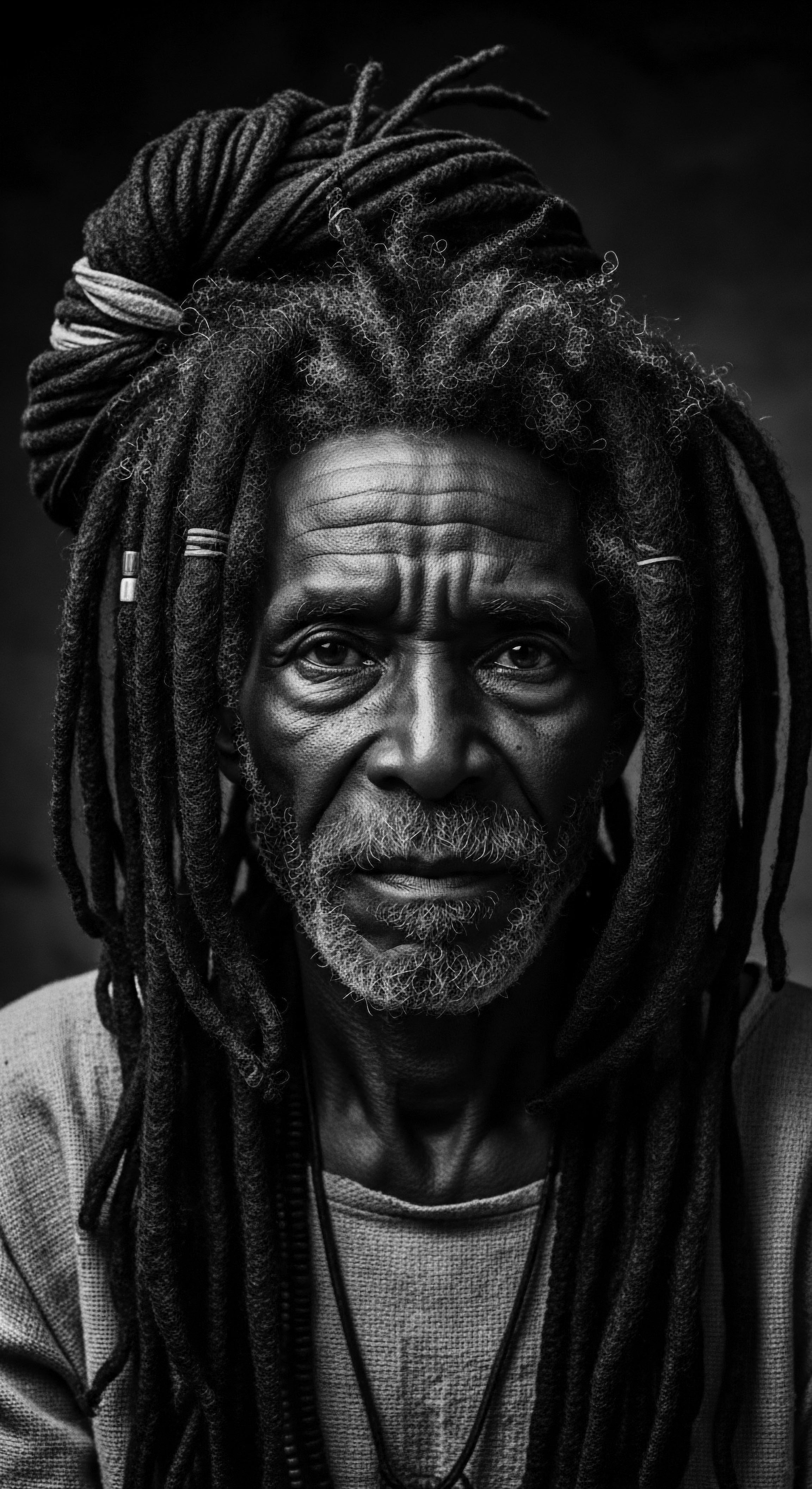
Telogen ❉ The Time of Release and Renewal
The Telogen Phase, or the “resting” phase, follows catagen and typically lasts for about three months. During this time, the hair strand remains fully formed but dormant within the follicle, awaiting its eventual release. Approximately 10% to 15% of all hair follicles on the scalp are in this state at any given moment. This period is not merely a cessation of activity; it is a vital time for the follicle to rejuvenate and prepare for the emergence of a new hair strand.
Ancestral practices often viewed shedding, the natural conclusion of the telogen phase, not as a loss, but as a necessary step in the continuous cycle of life and renewal. Hair collected from combs or brushes might have been treated with reverence, perhaps returned to the earth or woven into ceremonial items, signifying a cyclical connection to nature and ancestry. Rituals for cleansing the scalp, often involving herbal infusions or gentle massages, prepared the follicular bed for the next burst of anagen growth, demonstrating a profound understanding of the hair’s ongoing life. The natural process of shedding, then, becomes a symbol of release, allowing for the space for new growth to appear.
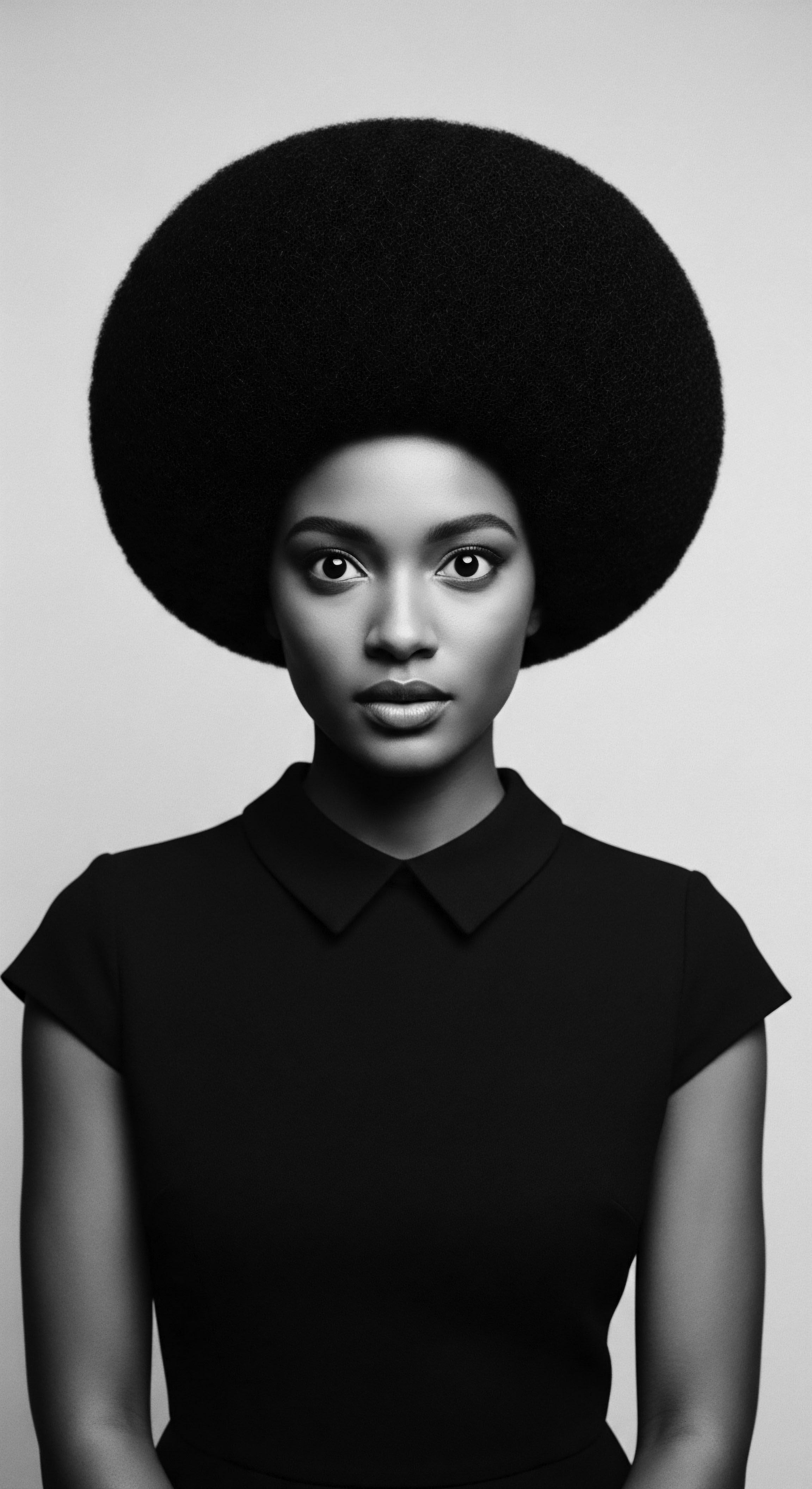
Exogen ❉ The Final Release
The Exogen Phase is the active shedding of the club hair, a distinct part of the telogen phase where the hair finally detaches from the follicle. This is the natural, often unnoticed, daily release of strands that have completed their cycle. This process ensures that the follicle is ready to commence a new anagen phase, beginning the cycle anew.
For communities with textured hair, where tangling and breakage can sometimes mask natural shedding, traditional detangling methods and protective styles served to manage this phase gently. The careful unraveling of braids or twists, the patient removal of shed hairs, all contributed to a respectful handling of this final release, preparing the way for the next generation of strands. The meaning of this phase is clear ❉ it is the clearing of the old to make way for the new, a constant, natural rhythm of regeneration.

The Unseen Roots ❉ Beyond the Surface
While the Hair Growth Phases operate at a microscopic, cellular level, their manifestations are visibly evident, shaping the overall appearance and feel of one’s hair. This inherent biology, though universal, interacts uniquely with the distinct characteristics of textured hair. The curl pattern, the density, and the inherent strength of each strand are all influenced by the follicle’s activity through these phases.
Early interpretations of hair cycles, particularly within various Indigenous and African cultures, often connected these visible changes to broader cosmic rhythms. The growth of hair might have been linked to lunar cycles, the changing seasons, or significant life stages, reflecting a holistic worldview where human existence was interwoven with the natural world. This ancient observation of hair’s cyclical nature laid the groundwork for care practices that sought to align with, rather than resist, the hair’s natural inclinations. The very presence of hair, its ability to grow and renew, served as a profound statement of vitality and connection to the earth’s own regenerative power.
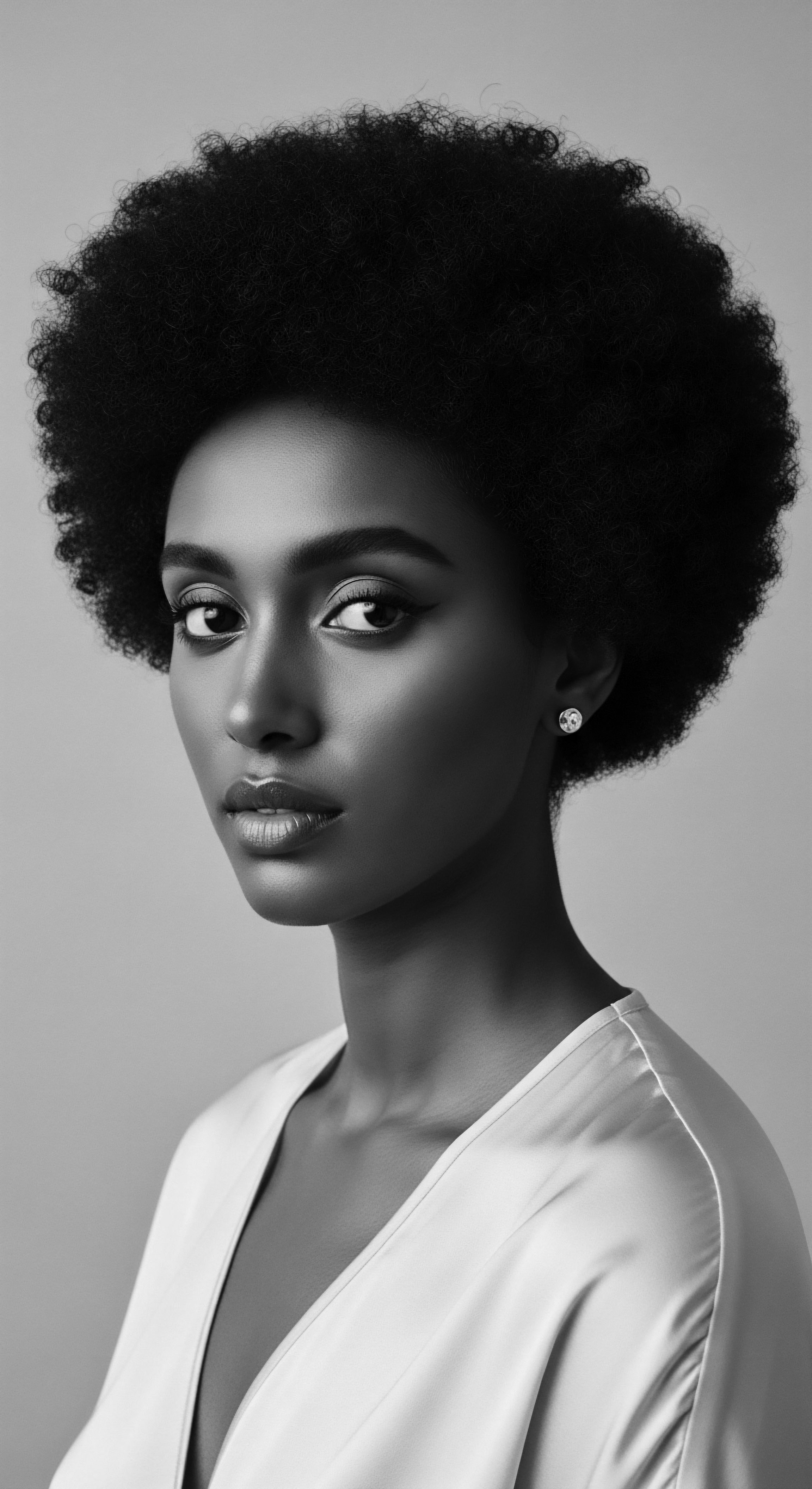
Intermediate
Moving beyond the foundational delineation, a deeper examination of the Hair Growth Phases reveals an intricate dance between genetics, environment, and the profound impact of ancestral practices. For textured hair, the biological machinery of the hair follicle, the very engine of growth, possesses a unique blueprint. This distinct architecture, which shapes the remarkable curl patterns, directly influences how each phase unfolds and how the hair responds to various forms of care. The follicle itself, a living repository of inherited traits, dictates not only the curl but also the average duration of the anagen phase, thereby influencing the maximum potential length of a strand.
The Hair Follicle, a marvel of biological design, does more than simply produce a fiber; it serves as a sensitive receiver, registering signals from within the body and from the external world. Its shape, a key determinant of curl pattern, influences the mechanical properties of the hair as it emerges. Tightly coiled strands, for instance, experience more bends and twists along their length, creating points of vulnerability that can lead to breakage if not handled with reverence. This inherent characteristic means that while the anagen phase might be biologically active, the visible length retention can be significantly impacted by external forces.
The hair follicle, a living testament to ancestral design, responds to both inherited blueprints and the world around it.

The Follicle’s Ancestral Blueprint and Environmental Echoes
The genetic variations present in textured hair types, particularly within Black and mixed-race communities, mean that the average anagen phase can be shorter than that of other hair types. This inherent difference is not a deficit but a unique characteristic that has shaped generations of care practices. Beyond genetics, the environment leaves its indelible mark.
Factors such as climate, diet, and stress—including the pervasive, enduring stress stemming from historical oppression and systemic inequalities—can exert a tangible influence on the hair growth cycle. Chronic stress, for instance, has been observed to prematurely shift actively growing hair follicles into a resting phase, leading to increased shedding.
The legacy of the transatlantic slave trade, for example, brought profound shifts in living conditions, nutrition, and psychological well-being for enslaved Africans. Deprived of traditional hair care tools and natural ingredients, and subjected to immense physical and emotional duress, their hair, a symbol of identity and spiritual connection, suffered. This historical trauma, and the subsequent generations’ experience with systemic discrimination, have created a unique landscape for textured hair health, where biological predisposition meets societal pressures. The hair, in its very being, carries the echoes of these journeys.
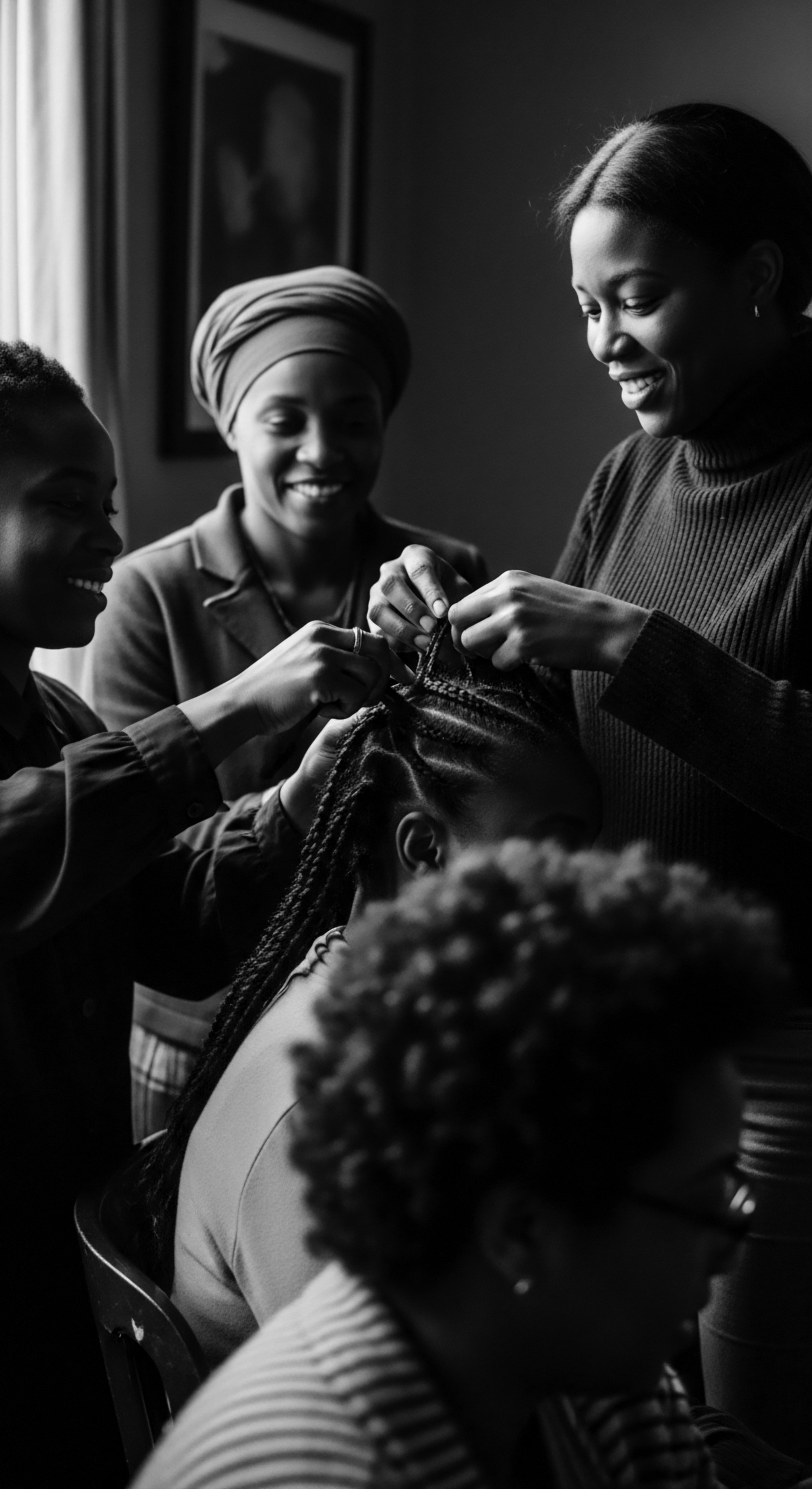
Traditional Remedies and Their Scientific Resonance
Long before modern trichology, ancestral practices offered intuitive, yet remarkably effective, ways to support the hair growth phases. These methods, steeped in cultural wisdom, often align with contemporary scientific understanding.
- Scalp Massage ❉ The rhythmic stimulation of the scalp, a practice common in many African and diasporic communities, encourages blood circulation to the hair follicles. This increased blood flow delivers vital nutrients and oxygen, directly supporting the cells in the dermal papilla during the Anagen Phase, thereby promoting robust growth.
- Protective Styling ❉ Styles such as braids, twists, and cornrows, which have deep historical roots, minimize manipulation of the hair strands. By reducing daily combing and environmental exposure, these styles safeguard the hair from mechanical breakage, allowing length to be retained. This preservation effectively supports the hair’s journey through its longer growth phases, even if the anagen period itself is genetically shorter.
- Nutrient-Rich Applications ❉ The use of indigenous oils and plant extracts, such as shea butter and various herbal infusions, provided topical nutrition. Shea butter, for instance, rich in fatty acids and vitamins, protected hair from environmental damage and sealed in moisture, reducing breakage and thereby supporting the hair’s ability to maintain its length through its cycle. These practices, passed down through oral traditions, were not merely cosmetic; they were deeply integrated into holistic wellness.
The enduring wisdom of ancestral approaches finds intriguing echoes and expansions in our contemporary scientific comprehension, revealing a continuous thread of hair understanding.

A Case Study ❉ The Mbalantu Women and Eembuvi Braids
The Mbalantu women of Namibia offer a compelling historical example of a community whose hair traditions reflect an intuitive mastery of hair growth phases, particularly the pursuit of extended length. Their revered practice of growing and maintaining exceptionally long hair, known as Eembuvi Braids, begins at a remarkably young age. Around twelve years old, girls commence a meticulous hair care regimen, coating their strands with a thick paste made from finely ground omutyuula tree bark mixed with fat. This mixture, applied over several years, is believed to accelerate hair growth and reduce breakage.
This centuries-old practice, passed from one generation to the next, showcases a profound, lived understanding of hair biology. By consistently protecting the hair from environmental damage and mechanical stress, and by providing topical nourishment, the Mbalantu women effectively created an optimal environment for their hair to remain in its Anagen Phase for as long as genetically possible, while minimizing visible loss during the Telogen and Exogen Phases. The sheer weight and length of their intricate headdresses, sometimes requiring ropes to distribute the load, underscore the dedication to this cultural practice and the success in achieving remarkable hair length. Their traditions were not simply about aesthetics; they were about preserving a sacred aspect of identity, a connection to their community and heritage, through diligent, phase-cognizant care.
The communal aspect of this care, where older women guide younger ones through the rituals, also strengthens societal bonds. This shared experience underscores how hair care was, and for many still is, a collective endeavor, a tender thread connecting individuals within a larger community. The hair, therefore, becomes a living chronicle, a tangible record of not only individual growth but also shared heritage and enduring practices.
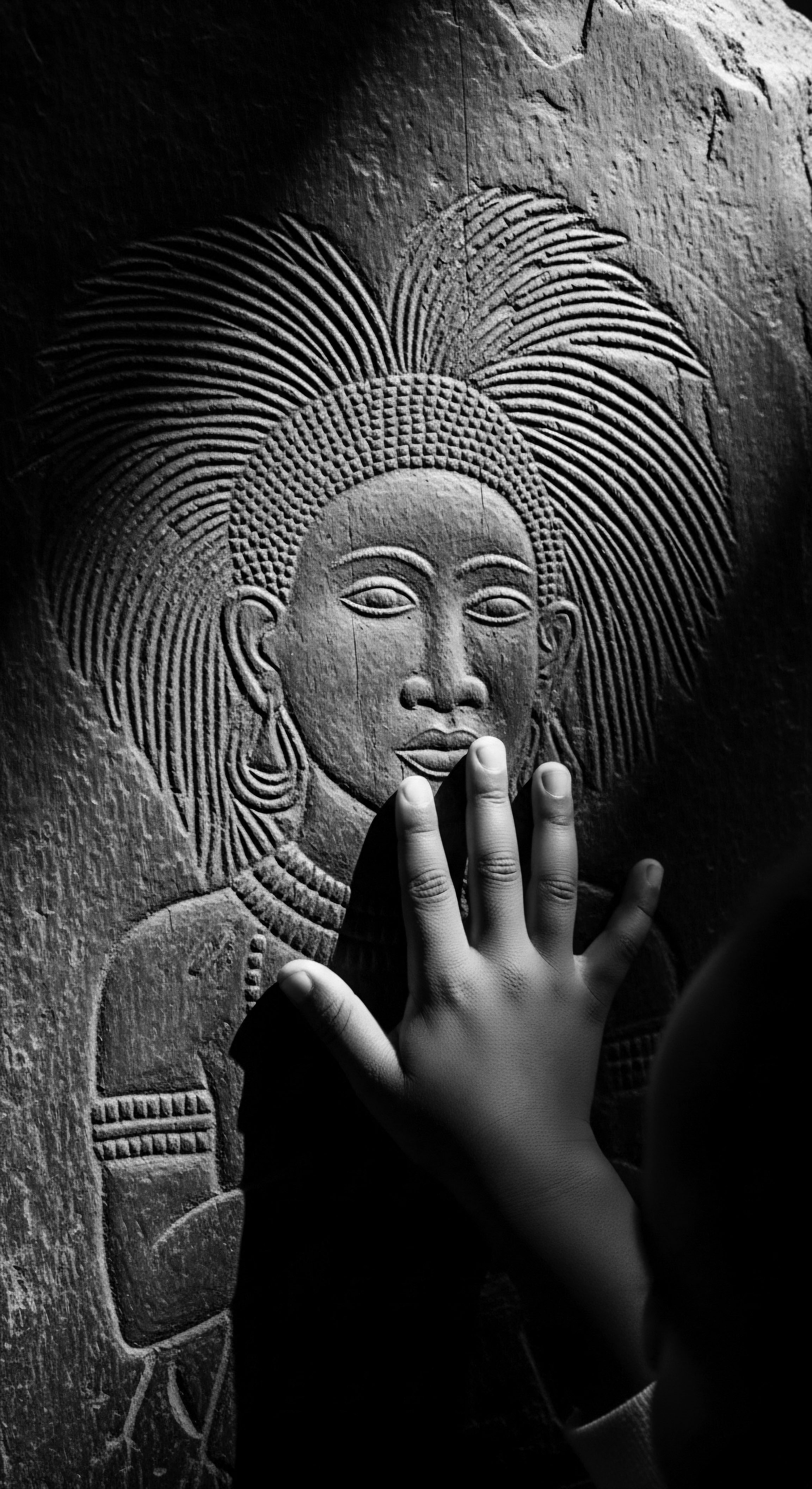
Academic
The academic examination of Hair Growth Phases transcends a simple biological delineation, extending into the complex interplay of genetics, cellular signaling, and profound sociocultural influences, particularly as they pertain to textured hair. This deeper understanding reveals how the very rhythm of hair growth is not only an intrinsic biological phenomenon but also a canvas upon which the experiences of identity, history, and systemic pressures are etched. The precise meaning of hair growth phases, when viewed through this lens, becomes a dynamic process, responsive to both internal biological directives and the external world’s impact on the individual.
The hair follicle, a miniature organ residing within the skin, orchestrates the cyclical production of hair. This sophisticated biological unit is a site of constant cellular activity, regulated by a symphony of growth factors, hormones, and signaling pathways. During the Anagen Phase, rapid proliferation of matrix cells in the hair bulb, fueled by the dermal papilla, leads to the formation of the hair shaft. This process is exquisitely sensitive to internal and external cues.
The subsequent Catagen Phase involves programmed cell death (apoptosis) and the regression of the lower part of the follicle. Finally, the Telogen Phase represents a period of quiescence, where the follicle rests before reactivating for a new cycle. The meticulous delineation of these phases allows researchers to comprehend the mechanisms behind hair growth and, critically, hair loss.
The academic inquiry into hair growth phases reveals a complex interplay of biology, heritage, and the enduring impact of lived experience.
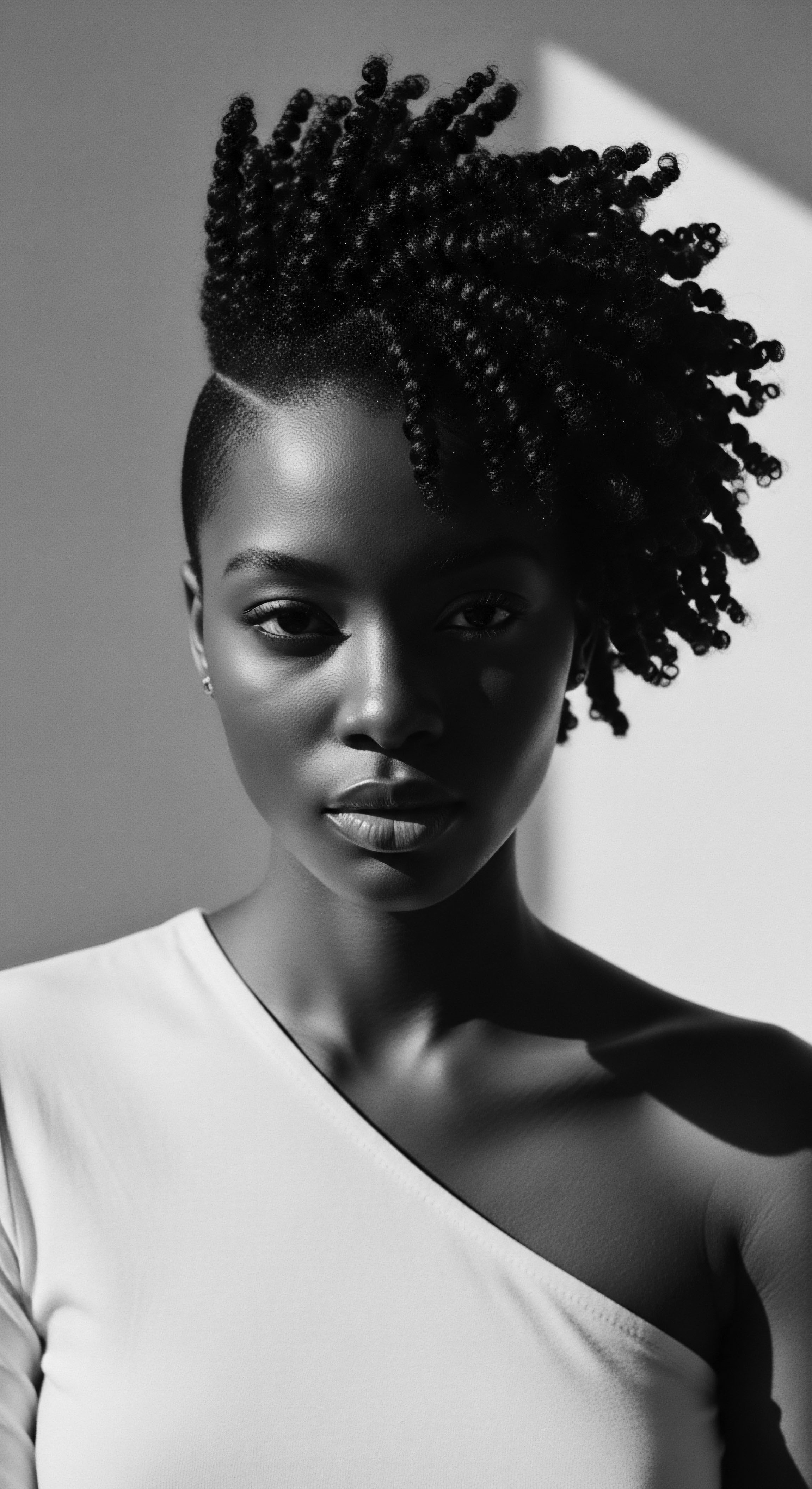
A Deeper Examination of Follicular Dynamics and Genetic Predispositions
For textured hair, the follicular structure itself presents unique considerations. The elliptical cross-section of the follicle and the irregular distribution of keratinocytes within the hair shaft contribute to the characteristic coiling and twisting of the hair strand. These structural features mean that textured hair often possesses more points of torsion and natural fragility, making it inherently more prone to breakage than straighter hair types.
This predisposition influences the visible length of hair, even if the biological duration of the anagen phase is comparable. The anagen phase length in individuals of African descent, for instance, can vary, and while general assumptions about hair growth rates often hover around 1 cm per month, individual and ethnic variability exists, necessitating a more nuanced understanding.
The interplay of genetics and epigenetics further shapes the hair growth cycle. Inherited traits dictate the fundamental characteristics of the hair follicle, but environmental factors, including nutrition, stress, and hair care practices, can significantly influence gene expression and, consequently, the health and behavior of the follicle. This intricate dance between inherited predisposition and environmental interaction provides a comprehensive picture of how hair grows and thrives.

The Sociocultural Impact on Hair Health ❉ A Legacy of Stress and Resilience
Perhaps one of the most profound areas of academic inquiry regarding hair growth phases, particularly for textured hair, lies in the intersection of biology with sociocultural realities. Centuries of colonial beauty standards, systemic discrimination, and the pressure to conform have exerted immense psychological and physiological burdens on Black and mixed-race communities. These pervasive stressors can, in turn, influence the very biological processes of hair growth.
Research indicates a compelling connection between chronic stress and hair loss conditions, such as Telogen Effluvium, where a significant number of hairs prematurely shift from the growing (anagen) phase into the resting (telogen) phase, leading to increased shedding. For Black women, who disproportionately experience the cumulative burden of racial discrimination and systemic inequities, this connection is particularly poignant. Dr. Arline Geronimus’s concept of “weathering” provides a powerful framework for understanding this phenomenon.
Weathering posits that Black individuals experience accelerated health deterioration due to the cumulative impact of repeated exposure to and high-effort coping with racialized stressors throughout their lives. While Geronimus’s initial work focused on reproductive health, the physiological toll of chronic stress, including elevated cortisol levels, has demonstrable effects on various bodily systems, including the hair follicle.
The relentless pressure to alter textured hair to conform to Eurocentric beauty standards, often through harsh chemical relaxers or tight styling practices, has also contributed to specific forms of hair loss, such as Traction Alopecia and Central Centrifugal Cicatricial Alopecia (CCCA), which are highly prevalent among Black women. These practices, while seemingly personal choices, are often rooted in societal pressures and the desire to avoid discrimination in educational or professional settings. A 2023 study revealed that Black women’s hair is 2.5 times as likely as white women’s hair to be perceived as “unprofessional,” leading 66% of Black women to change their hair for job interviews, with 41% opting for straightened styles. This constant negotiation with appearance standards creates a cycle of stress that can directly impede healthy hair growth and contribute to follicular damage.
The meaning of hair growth phases, in this context, extends beyond the biological. It becomes a testament to the resilience of the human spirit and the body’s adaptive mechanisms in the face of enduring adversity. The ability of hair to continue its cycle, even under such pressures, speaks to an inherent biological drive for renewal.
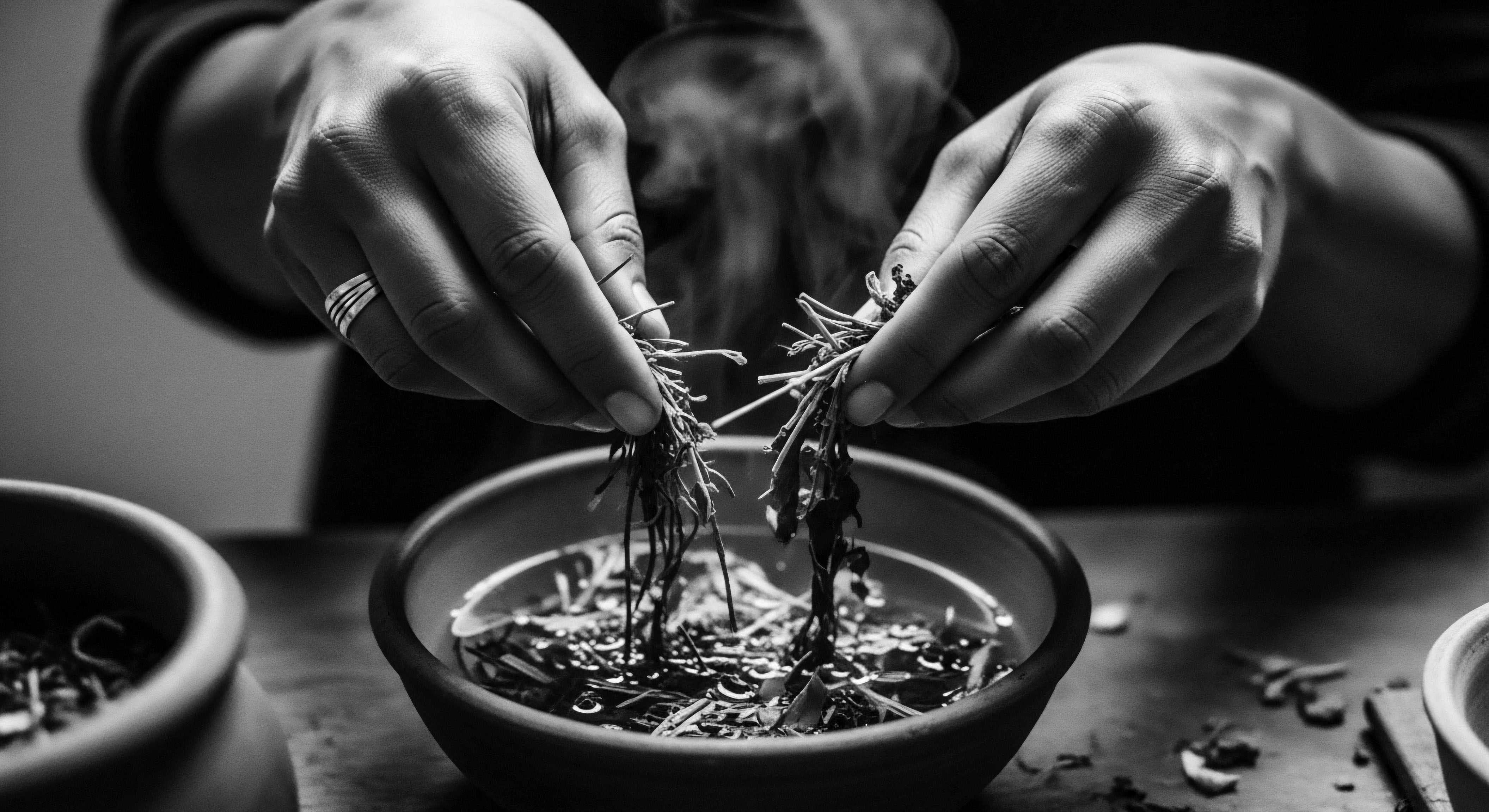
Ethnobotanical Wisdom and Modern Validation
A fascinating area of academic convergence lies in the validation of ancestral ethnobotanical practices through modern scientific lens. Many traditional African plants, long utilized for hair treatment and care, are now being investigated for their potential to support hair growth and address scalp conditions. For instance, out of 68 plants identified as African treatments for alopecia, dandruff, and tinea, 30 have research associated with hair growth and general hair care, with studies examining their impact on biomarkers and the rate of telogen to anagen phase transition. This research underscores that traditional wisdom often contained a deep, empirical understanding of plant properties that intuitively supported healthy hair cycles.
The knowledge systems that developed these practices were not based on microscopic analysis but on keen observation, experimentation, and intergenerational transmission of information. The efficacy of ingredients like shea butter, coconut oil, and various herbal infusions, which moisturize, protect, and provide nutrients, inherently supports the hair through its vulnerable phases, reducing breakage and creating a conducive environment for growth. This demonstrates that while modern science provides a detailed explanation, ancestral practices offered a holistic, effective approach to nurturing hair.
| Aspect of Care Length Retention |
| Ancestral Practice (Historical Context) Protective styles (braids, twists, wraps) to minimize daily manipulation and environmental exposure. Often maintained for weeks or months. |
| Contemporary Scientific Understanding (Link to Phases) Reduces mechanical stress and breakage, allowing hair to remain in the anagen phase for its full genetic duration, thus preserving visible length. |
| Aspect of Care Scalp Health |
| Ancestral Practice (Historical Context) Regular scalp oiling with natural ingredients (e.g. shea butter, coconut oil) and gentle massage. Herbal rinses for cleansing and soothing. |
| Contemporary Scientific Understanding (Link to Phases) Maintains a healthy follicular environment, supporting nutrient delivery to the hair bulb during anagen and preventing inflammation that can disrupt cycles. |
| Aspect of Care Shedding Management |
| Ancestral Practice (Historical Context) Careful, ritualistic detangling; respectful handling of shed hair, sometimes incorporating it into spiritual practices. |
| Contemporary Scientific Understanding (Link to Phases) Acknowledges the natural exogen phase, preventing excessive pulling of hairs still in telogen or early anagen, minimizing premature shedding and damage. |
| Aspect of Care Nourishment |
| Ancestral Practice (Historical Context) Topical application of plant-based butters and oils, often infused with herbs. Dietary practices rich in diverse, nutrient-dense foods. |
| Contemporary Scientific Understanding (Link to Phases) Provides external lubrication and internal building blocks (vitamins, minerals, fatty acids) essential for cell division in anagen and overall follicle vitality. |
| Aspect of Care These approaches, whether ancient or modern, share a common thread ❉ recognizing hair as a living entity deserving of mindful attention and care, often shaped by deep cultural respect. |

Reclaiming the Narrative ❉ Empowering Hair Wellness
The understanding of hair growth phases, especially within the context of textured hair heritage, provides a powerful tool for empowerment. It allows individuals to move beyond historically imposed beauty standards and to connect with the inherent biological rhythms of their hair. This understanding fosters a sense of agency, enabling choices that prioritize follicular health and length retention over fleeting trends or harmful practices. The knowledge that hair growth is a cyclical, regenerative process, deeply influenced by holistic well-being, offers a path toward self-acceptance and reverence for one’s ancestral hair.
By acknowledging the biological predispositions of textured hair, recognizing the historical and ongoing impact of systemic stressors, and validating the enduring wisdom of traditional hair care, we collectively participate in a reclamation of narrative. This deeper comprehension of the Hair Growth Phases is not merely an academic exercise; it is a vital step in fostering a world where every strand is honored for its unique journey and its profound connection to identity and heritage. The continuous pursuit of this knowledge serves to dismantle inherited burdens and build a future where textured hair is celebrated in its full, glorious, natural state.

Reflection on the Heritage of Hair Growth Phases
The exploration of hair growth phases has taken us on a journey from the cellular heart of the follicle to the expansive tapestry of human experience, always centered on the profound legacy of textured hair. We have seen how the intrinsic biological rhythm of growth, transition, and release—the Anagen, Catagen, and Telogen phases—is not merely a scientific concept but a living testament to the resilience and continuous renewal embedded within each strand. This cycle, a silent pulse within us, has always held a deeper meaning for communities whose hair is a direct link to ancestral lines and cultural identity.
The ‘Soul of a Strand’ ethos reminds us that hair is more than keratinized protein; it is a repository of memory, a symbol of resistance, and a vibrant expression of self. For Black and mixed-race communities, understanding the nuances of these growth phases is not just about scientific accuracy; it is about honoring the wisdom of generations who intuitively understood hair’s needs. The careful braiding rituals, the application of nourishing plant-based remedies, the communal acts of grooming—all speak to an ancient awareness of how to support hair through its natural life. These practices, born of necessity and deep observation, often provided the very conditions that allowed textured hair to flourish, even when external forces sought to diminish its natural splendor.
We have also acknowledged the shadow side of this journey ❉ the enduring impact of historical trauma and systemic pressures on hair health. The biological responses to chronic stress, the societal pressures to conform to Eurocentric beauty ideals, and the very real physical and emotional toll these exact, underscore the deep connection between well-being and the visible state of our hair. Yet, even in the face of these challenges, the hair follicle, with its inherent capacity for renewal, stands as a symbol of unwavering strength.
The conversation between ancient wisdom and contemporary science is ongoing, a beautiful dialogue that enriches our comprehension of hair. Modern research often affirms the efficacy of traditional practices, providing a scientific explanation for what our ancestors understood through generations of lived experience. This confluence of knowledge empowers us to approach hair care with both reverence for the past and informed choices for the present.
Hair, in its cyclical nature, embodies the enduring spirit of ancestral wisdom and the vibrant narrative of self.
The Hair Growth Phases, therefore, are not static biological facts but dynamic narratives. They speak of the Earth’s cycles reflected in our bodies, of the hands that braided and nurtured through time, and of the stories woven into every coil and curl. As we continue to delve into the mysteries of textured hair, we do so with a profound sense of purpose ❉ to celebrate its inherent beauty, to honor its heritage, and to ensure that every strand can truly thrive, unbound and free, a testament to the past, a statement for the present, and a promise for the future. The very existence of our hair, in its myriad forms and textures, is a continuous act of remembrance and a bold declaration of identity.
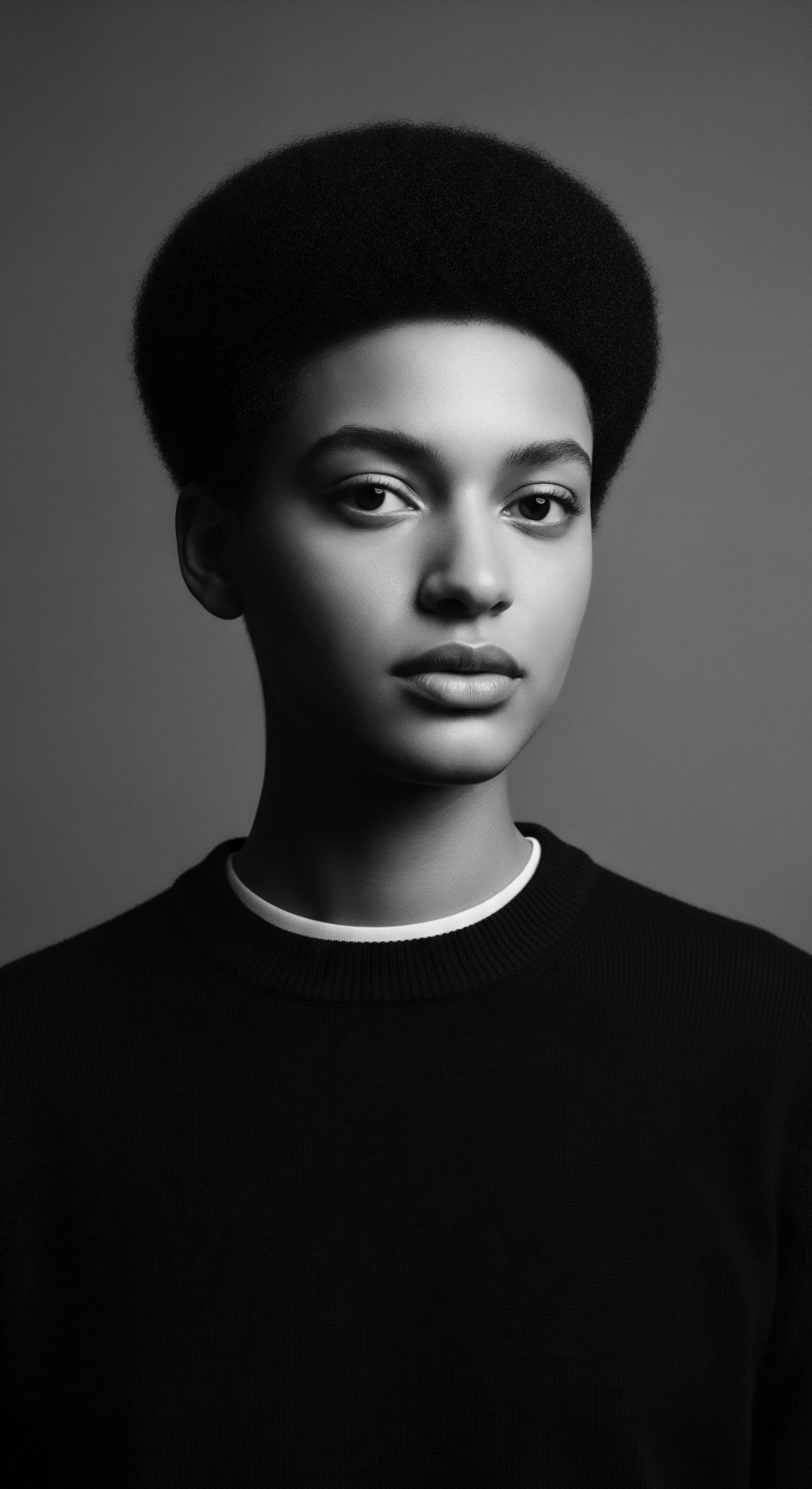
References
- Byrd, A. D. & Tharps, L. D. (2014). Hair Story ❉ Untangling the Roots of Black Hair in America. St. Martin’s Press.
- Geronimus, A. T. (1992). The Weathering Hypothesis and the Health of African-American Women and Infants ❉ Evidence and Speculations. Ethnicity & Disease, 2(3), 207-221.
- Geronimus, A. T. Hicken, M. Keene, D. & Bound, J. (2010). “Weathering” and Age Patterns of Allostatic Load Scores Among Blacks and Whites in the United States. American Journal of Public Health, 100(10), 1962–1969.
- Mbilishaka, O. (2018). PsychoHairapy ❉ The Psychology of Black Hair and Mental Health in Hair Care Settings .
- Morrow, L. (1990). Hair ❉ The Long and the Short of It. Rizzoli International Publications.
- Paus, R. & Cotsarelis, G. (2008). The Biology of Hair Follicles. New England Journal of Medicine, 359(12), 1218-1227.
- Peters, E. M. J. et al. (2006). The Stress-Induced Premature Catagen Development in Human Hair Follicles. American Journal of Pathology, 168(1), 226-234.
- Soiri, I. (1996). The Traditional Eembuvi Hair Styles of the Ovambadja and Ovahimba Women. National Art Gallery of Namibia.
- Tobin, D. J. (2006). Hair in Toxicology ❉ An Important Biomarker. Royal Society of Chemistry.
- Wang, L. et al. (2015). Chronic Restraint Stress Induces Hair Cycle Delay via Autophagy. Journal of Investigative Dermatology, 135(5), 1435-1438.
